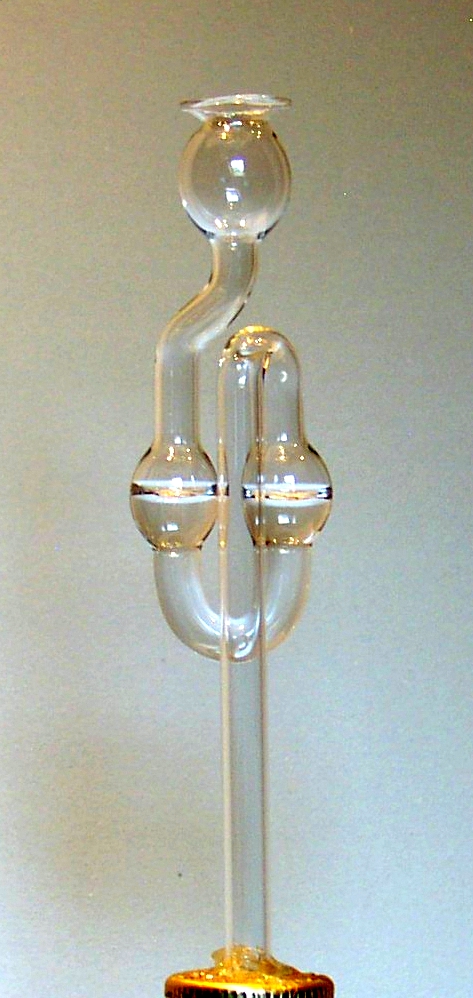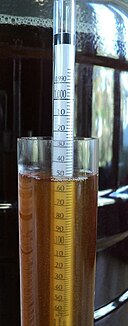\[ \begin{equation}ABV \approx ( \delta_i - \delta_f ) ( k * \delta_e )^{-1} \end{equation} \]
Where $\delta_e$ is the density of ethanol
\[ \begin{equation} \delta_e = 0.7892 \text{ g/cm}^3 \end{equation} \]
And $k$ is the proportionality constant between the weights of $CO_2$ and $\text{ethanol}$ that are produced during the fermentation process.
\[ W_{CO_2} = k*W_e \]
We can derive the value of $k$ by having a look at the fermentation reaction:
\[ C_6H_{12}O_{6} \rightarrow 2 C_2H_5OH + 2 CO_2 \]
In other words, for each molecule of carbon dioxide released in fermentation, one ethanol molecule is produced. Since the molar mass of ethanol is 46.07 g/mol, compared to 44.01 g/mol for carbon dioxide; we have
\[ \begin{equation}k = \frac{W_{CO_2}}{W_e}= \frac{44.01 \text{g/mol}}{ 46.07 \text{g/mol}} \approx 0.9553 \end{equation} \]
And now it is time to plug the numbers...Using the values of (2) & (3) into (1), we finally get
\[ ABV \approx ( \delta_i - \delta_f ) ( 0.9553*0.7892\text{ g/cm}^3)^{-1} \]
\[ \Rightarrow ABV \approx ( \delta_i - \delta_f ) *1.326\text{ cm}^3/ \text{g} \]
In case the hydrometer readings for $\delta_i$ and $\delta_f$ are given in kg/m$^3$ instead of g/cm$ ^3$, we need to divide by 1000; and if we want the Alcohol by Volume to be expressed as a percentage, we have to multiply by 100. In such case,
\[ \boxed{ \%ABV \approx ( \delta_i - \delta_f ) *0.1326 \text{ [m}^3/ \text{kg]} } \]

